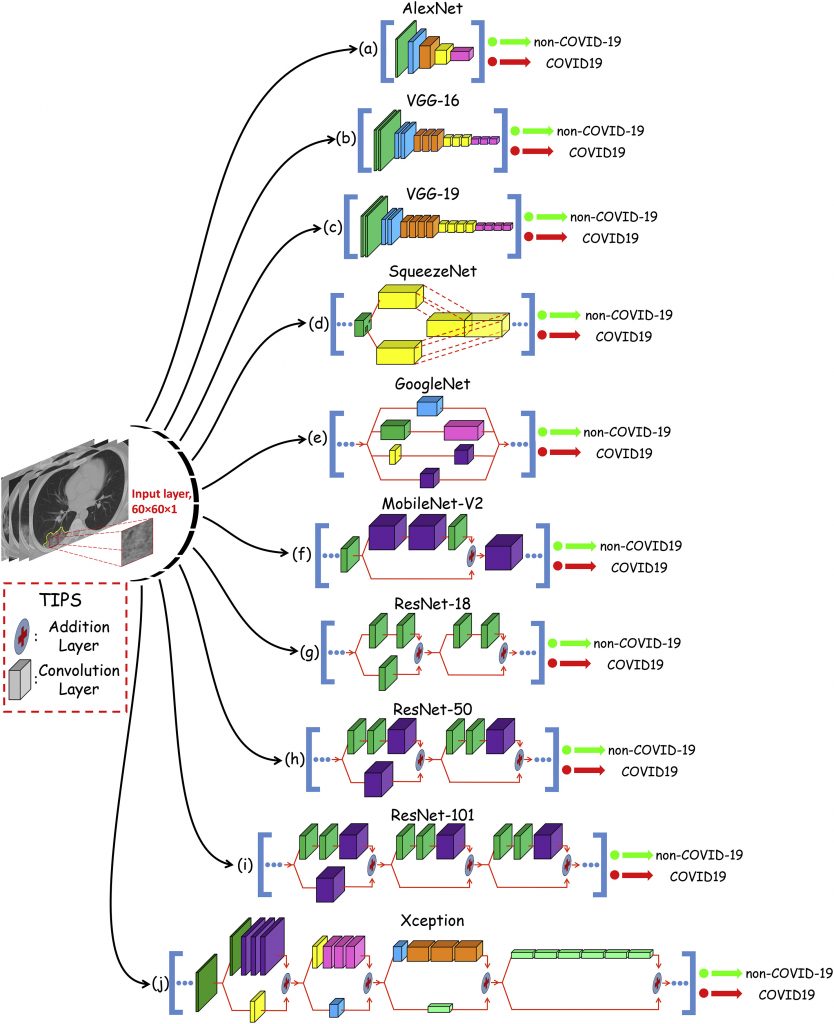Abstract
Fast diagnostic methods can control and prevent the spread of pandemic diseases like coronavirus disease 2019 (COVID-19) and assist physicians to better manage patients in high workload conditions. Although a laboratory test is the current routine diagnostic tool, it is time-consuming, imposing a high cost and requiring a well-equipped laboratory for analysis. Computed tomography (CT) has thus far become a fast method to diagnose patients with COVID-19. However, the performance of radiologists in diagnosis of COVID-19 was moderate. Accordingly, additional investigations are needed to improve the performance in diagnosing COVID-19. In this study is suggested a rapid and valid method for COVID-19 diagnosis using an artificial intelligence technique based. 1020 CT slices from 108 patients with laboratory proven COVID-19 (the COVID-19 group) and 86 patients with other atypical and viral pneumonia diseases (the non-COVID-19 group) were included. Ten well-known convolutional neural networks were used to distinguish infection of COVID-19 from non-COVID-19 groups: AlexNet, VGG-16, VGG-19, SqueezeNet, GoogleNet, MobileNet-V2, ResNet-18, ResNet-50, ResNet-101, and Xception. Among all networks, the best performance was achieved by ResNet-101 and Xception. ResNet-101 could distinguish COVID-19 from non-COVID-19 cases with an AUC of 0.994 (sensitivity, 100%; specificity, 99.02%; accuracy, 99.51%). Xception achieved an AUC of 0.994 (sensitivity, 98.04%; specificity, 100%; accuracy, 99.02%). However, the performance of the radiologist was moderate with an AUC of 0.873 (sensitivity, 89.21%; specificity, 83.33%; accuracy, 86.27%). ResNet-101 can be considered as a high sensitivity model to characterize and diagnose COVID-19 infections, and can be used as an adjuvant tool in radiology departments.


